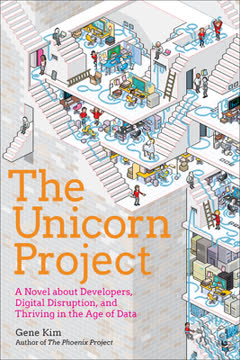Key Takeaways
1. Connected customers are reshaping business landscapes
Customers are connecting, forming networked communities that allow them to rapidly share information and self-organize into powerful interest groups.
Shifting power dynamics. The balance of power is shifting from companies to customer networks. Connected customers have more choices, amplified voices, and greater access to information than ever before. This shift is driven by social media, online reviews, and instant communication technologies.
Impact on businesses. Companies must adapt to this new reality or risk obsolescence. Examples like Dell's "Dell Hell" incident and Dave Carroll's "United Breaks Guitars" video demonstrate how connected customers can rapidly impact a company's reputation and bottom line. To thrive, businesses must become more responsive to customer needs and demands, engaging in authentic dialogue and providing exceptional experiences.
2. The service economy demands adaptive, customer-centric organizations
We no longer live in an industrial economy. We live in a service economy.
Economic transformation. The shift from manufacturing to services is reshaping business landscapes. In developed economies, services now account for about 80% of economic activity. This transition is driven by:
- Product saturation in mature markets
- Advancements in information technology
- Increasing urbanization
Organizational implications. Service-based businesses require different organizational structures and approaches compared to traditional manufacturing companies. They must be more flexible, responsive, and customer-centric. Companies like GE and IBM have successfully transitioned from product-centric to service-oriented models, demonstrating the potential for established firms to adapt and thrive in the new economy.
3. Everything is becoming a service, requiring new business models
A product is a service avatar.
Service-dominant logic. This paradigm shift views products as physical manifestations of services. For example, a car provides the service of transportation, while a smartphone offers communication and information access services. This perspective changes how companies approach value creation and customer relationships.
Business model implications:
- Focus on long-term customer relationships over one-time transactions
- Emphasize outcomes and experiences rather than product features
- Design for ongoing service delivery and improvement
- Collaborate with customers in value co-creation
Companies like Amazon (Kindle) and Apple (iTunes) exemplify this approach, building ecosystems of services around their products to create ongoing value for customers.
4. Complexity and variability necessitate distributed control
You can't run service operations like a factory, because customers just walk onto the factory floor and mess everything up.
Challenges of service delivery. Unlike manufacturing, services involve direct customer interaction, introducing variability and complexity that are difficult to standardize or control centrally. This unpredictability requires a different approach to organization and management.
Distributed control solution. To effectively handle variability, companies must:
- Empower front-line employees to make decisions
- Create flexible systems that can adapt to customer needs
- Focus on outcomes rather than rigid processes
- Develop robust support structures for front-line workers
Examples like Zappos and Ritz-Carlton demonstrate how distributed control and employee empowerment can lead to superior customer experiences and business success in complex service environments.
5. Companies lose touch with customers as they grow and specialize
Without question, customers are the single biggest factor in any company's long-term growth and profitability. And yet, as companies grow, distractions multiply.
Growth-induced disconnection. As companies expand, several factors can cause them to lose touch with customers:
- Over-expansion into too many areas
- Development of organizational blind spots
- Creation of risk-avoidant cultures
Consequences and examples:
- Starbucks lost focus on core coffee experience during rapid expansion
- Kodak missed the digital photography revolution due to organizational blind spots
- Many large companies become bureaucratic and slow to adapt to customer needs
Maintaining connection. Successful companies like Amazon and Zappos have found ways to stay connected to customers even as they grow, through ongoing customer feedback loops, empowered front-line employees, and a relentless focus on customer experience.
6. Structural change is necessary for companies to remain adaptive
Growth and evolution leads to increasing specialization, which limits a company's ability to adapt and evolve.
The specialization trap. As companies grow, they tend to become more specialized and efficient, but this can lead to rigidity and an inability to adapt to changing market conditions. This specialization often results in:
- Siloed departments with conflicting goals
- Slow decision-making processes
- Difficulty in cross-functional collaboration
Need for structural change. To remain adaptive, companies must rethink their organizational structures:
- Move from hierarchical to networked structures
- Create cross-functional teams focused on customer outcomes
- Implement flexible systems that can quickly reconfigure as needed
- Foster a culture of continuous learning and experimentation
Companies like W.L. Gore and Morning Star have implemented radical structural changes to remain adaptive and customer-focused, demonstrating the potential for alternative organizational models.
7. Connected companies learn and adapt through distributed networks
Connected companies are not hierarchies, fractured into unthinking, functional parts, but holarchies: complex systems in which each part is also a fully functional whole in its own right.
Holarchic structure. Connected companies organize as networks of semi-autonomous units that can function independently while contributing to the whole. This structure allows for:
- Rapid learning and adaptation at all levels
- Increased resilience to market changes
- Better alignment with customer needs
Learning mechanisms:
- Encourage experimentation and rapid iteration
- Create feedback loops between units and with customers
- Share knowledge across the network
- Empower local decision-making based on real-time information
Examples like Haier's RenDanHeYi model and Spotify's squad structure demonstrate how distributed networks can drive innovation and adaptability in large organizations.
8. Pods: Small, autonomous units drive connected company success
The core building block of a podular organization is the pod: a small, autonomous unit that is authorized to represent the company and deliver results to customers.
Pod characteristics:
- Small, cross-functional teams (typically 5-15 people)
- Directly responsible for serving customers
- Empowered to make decisions and innovate
- Accountable for results
Benefits of pods:
- Increased agility and responsiveness to customer needs
- Improved employee engagement and ownership
- Faster learning and innovation cycles
- Enhanced ability to scale operations
Companies like Amazon (with its "two-pizza teams") and Buurtzorg (self-managing nursing teams) have successfully implemented pod-based structures to drive customer-centric innovation and operational excellence.
9. Platforms support and empower pods in connected organizations
A podular organization requires support structures that network the pods together so they can coordinate their activities, share learning, and increase the company's overall effectiveness.
Platform functions:
- Provide shared resources and infrastructure
- Facilitate communication and coordination between pods
- Establish common standards and protocols
- Offer training and support for pod members
Effective platform design:
- Focus on enabling rather than controlling pods
- Evolve based on pod needs and feedback
- Balance standardization with flexibility
- Foster a culture of collaboration and knowledge sharing
Examples like Haier's open innovation platforms and Amazon's internal APIs demonstrate how well-designed platforms can empower autonomous units while maintaining organizational coherence.
10. Leadership in connected companies focuses on purpose and support
A connected company is a network of loosely coupled, semi-autonomous units. So what is the role of a leader?
Redefining leadership. In connected companies, leaders shift from command-and-control to enablement and support:
- Articulate and reinforce shared purpose and values
- Create an environment of trust and psychological safety
- Remove obstacles and provide resources for pods
- Foster connections across the organization
Key leadership practices:
- Spend time on the front lines to understand customer and employee needs
- Communicate transparently about challenges and opportunities
- Celebrate and amplify successful innovations from pods
- Model the behaviors and values expected in the organization
Leaders like Tony Hsieh at Zappos and Zhang Ruimin at Haier exemplify this new approach to leadership in connected companies.
11. Managing connected companies requires balancing freedom and cohesion
The job of management is to design and run the systems that support the company in achieving its purpose.
Management challenges. Connected companies must balance individual pod autonomy with overall organizational coherence:
- Ensure alignment around shared purpose and values
- Facilitate knowledge sharing and collaboration across pods
- Manage resources and investments at the organizational level
- Maintain consistent customer experience across diverse pod activities
Management approaches:
- Design lightweight coordination mechanisms (e.g., OKRs, information radiators)
- Create forums for cross-pod learning and problem-solving
- Implement adaptive performance management systems
- Continuously evolve platforms based on pod feedback and changing needs
Companies like Spotify and Netflix have developed innovative management practices to balance autonomy and alignment in their distributed organizations.
12. Transforming into a connected company: Strategies for change
Connected companies today are the exception, not the rule. But as long as the environment is characterized by change and uncertainty, connected companies will have the advantage.
Transformation paths:
- Organic growth: Maintain connectedness as you scale
- Top-down, leader-driven change: Radically restructure the organization
- Pilot pods: Experiment with connected models in specific areas
- Network weaving: Gradually build connections across the organization
Key transformation principles:
- Start with a clear, customer-centric purpose
- Empower front-line employees to make decisions
- Invest in platforms that support pod autonomy and collaboration
- Foster a culture of experimentation and continuous learning
- Be patient and persistent, as transformation takes time
Examples like IBM's transformation under Lou Gerstner and Haier's multi-decade journey to RenDanHeYi demonstrate that while challenging, becoming a connected company is possible and can lead to significant competitive advantages in today's rapidly changing business environment.
Last updated:
Review Summary
The Connected Company receives high praise for its insights on adapting organizations to the modern, connected world. Readers appreciate the accessible writing style, practical tips, and engaging examples. The book's focus on customer-centric approaches, decentralized decision-making, and fostering a culture of learning resonates with many. Some reviewers note its relevance for large corporations seeking to innovate, while others find it valuable for entrepreneurs. A few critics mention that the book may oversimplify complex topics or rely too heavily on anecdotal evidence.
Similar Books










Download PDF
Download EPUB
.epub digital book format is ideal for reading ebooks on phones, tablets, and e-readers.






